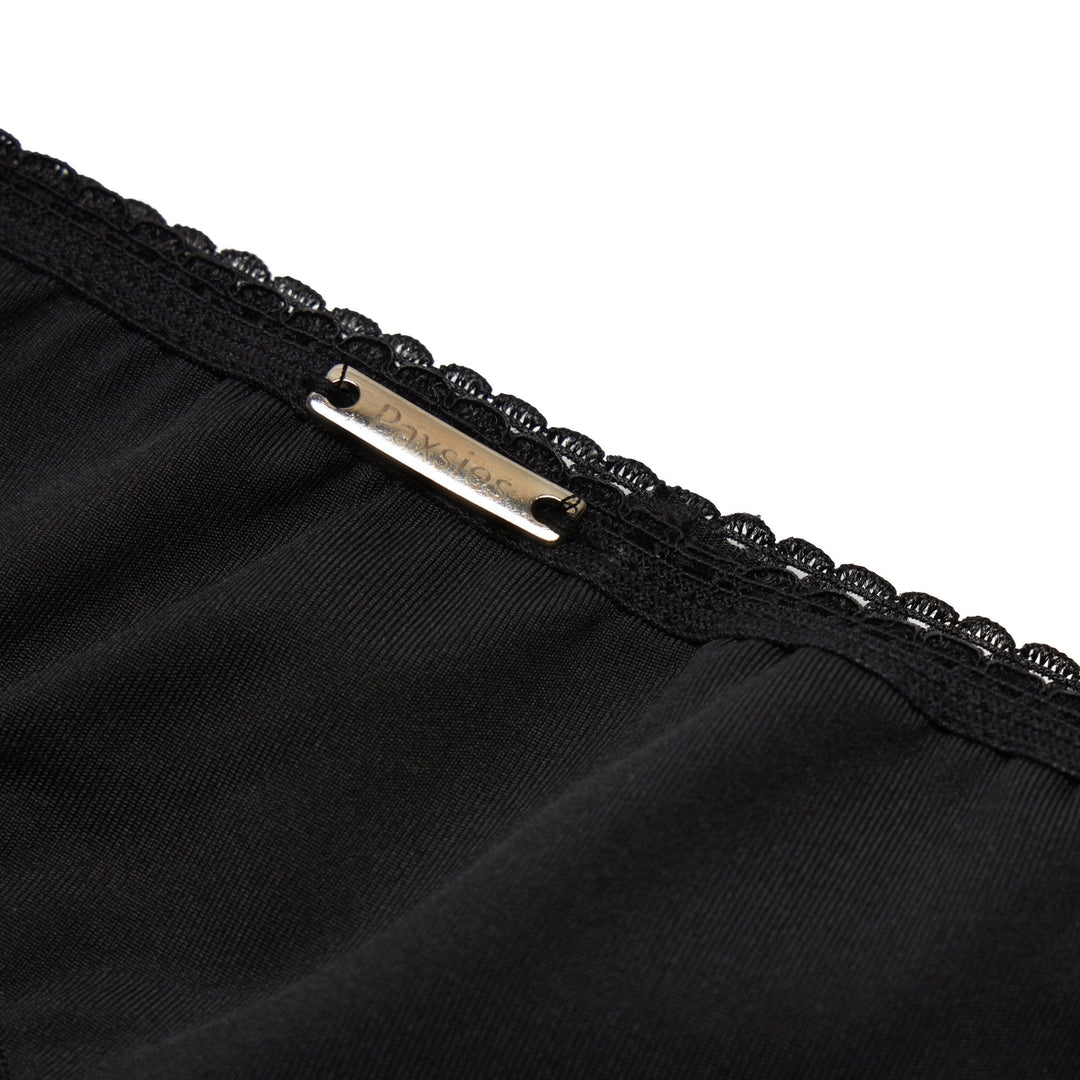FTM Bottom Surgery - How do they make a penis?
For many trans men and transmasculine people, bottom surgery is a huge milestone in the journey of transitioning. Yet, there's a lot of misconceptions about how exactly it works. In this article, we'll take you through the whole process of phalloplasty, a type of FTM bottom surgery procedure. There are other types of bottom surgery procedures too, like metoidioplasty, which we explore more in this article.
Phalloplasty procedure that involves the reconstruction of a penis. It's not a procedure specific to trans men - cis men do this in case of trauma, disease, or congenital defects. Nowadays, it's also a surgery often considered by trans men and transmasculine individuals. The goal of phalloplasty is to create a functional penis that can be used for urination and has the ability to feel different sensations. While the procedure is quite complex, the techniques used in this procedure are rapidly evolving!
The Bottom Surgery Timeline
Every transition is personal - that means the procedure differs from person to person depending on their preferences and needs. Some people may choose to combine all or several procedures in one go, while others may decide to spread them out over the course of a few years. Bottom surgery generally requires consultations from three medical specialists: a gynecologist, a urologist, and a plastic surgeon.
Is it Right for Me?
Arguably the most important step in the FTM bottom surgery timeline is deciding whether it's right for you or not. The procedures we outline below are very invasive, and could be very expensive. Also, it's important to remember that not all trans men and transmasculine people experience bottom dysphoria, and choose to forego bottom surgery. Whatever you choose, you're valid, and it doesn't make you any more or less of a man!
People decide to get bottom surgery for a variety of different reasons. For some, it's important in relieving feelings of bottom dysphoria, whether it's from the newly gained ability to pee standing up or to have penetrative sex with a partner.
Research
Because of the complex nature of FTM bottom surgery, it's best to find an established team of medical professionals that have worked together on FTM bottom surgeries in the past. Nowadays, you can find teams of doctors in your country and often view the results of their previous surgeries through a quick web search.
It's also important to talk to other trans men and transmasculine people that have undergone these procedures (if they're comfortable, of course). Together with the surgical team's suggestions, their experiences can help you make an informed decision about whether bottom surgery is right for you. It's very important for you to determine what you want to get out of your procedure, and perhaps, what you want to preserve. Consider, for example, how important sexual functioning and fertility are to you. Once you have a clear picture of what you need and what to expect from these procedures, you can decide who, when how, and where the procedures will be performed.
Hysterectomies and Oophorectomies
For many, the first procedure done for bottom surgery involves the removal of the uterus (hysterectomy) and the ovaries (oophorectomy). There are many reasons behind these procedures. Firstly, they are done for for medical reasons: to reduce abdominal pain (caused by testosterone), to avoid pregnancy, and maximize the effects of the testosterone. They can also be done for other reasons, including for legal name changes or to reduce gender dysphoria. For some, these will be the only procedures they get done. However, if you've decided you want other procedures done as well, these are often combined.
Removal of the Vagina
The removal of the vagina is called a vaginectomy and can usually be separated into two parts. First, the vulva lining is removed, and second, the vagina walls are fused, closing the vaginal opening. There are many reasons to perform a vaginectomy, but this is mainly done to reduce complications during the urethral lengthening in phalloplasty. You can read more about vaginectomies here.
Creation of the Penis
The creation of a penis, or phalloplasty, is the procedure often associated with the term "bottom surgery". During a phalloplasty, doctors take a flap of skin from a donor area of the body to create a new phallus. First, they use the part of the skin flap to lengthen the urethra. This procedure is necessary if the patient wants to urinate standing up.
The other part of the skin flap is used to create the penis' shaft, and it's rolled around the new urethra, building a tube-within-a-tube construction. During the procedure, the blood vessels and nerves are preserved and microsurgically reattached to the body, allowing blood flow and sensation in the created penis.
The most common practice for this kind of surgery is a radial forearm free-flap (RFF) phalloplasty, in which the doctor takes the donor skin from the forearm. This because it's supposed to create the best results for penile sensitivity. A common alternative to RFF phalloplasty is anterior lateral thigh (ALT) pedicled flap phalloplasty. In ALT phalloplasty, the phallus and the urethra are created in the same way as with RFF, but they take the skin flap from the thigh. This, however, is not the preferred method for many surgeons because it often results in less sensitivity and leaves significant scars, although in a more discreet place. Other common donor locations include the lower abdomen, groin, and torso. Click here if you want to see people's phalloplasty results.
You can find more pictures of the procedure on this website. Please be advised that these images are highly graphic and NSFW!
Scrotoplasty
After phalloplasty, many trans men and transmasculine people want to have a scrotum as well. Scrotoplasty is an umbrella term for all reconstructive scrotum surgeries. As with phalloplasty, cis men also undergo this surgery to reduce excessive skin or in cases of trauma. In the case of scrotoplasty for trans men and transmasculine people, this procedure can be divided in to two parts. First, the labia majora is used to create the scrotum. This is because they evolve from the same embryonic structure during development, so the labia majora and the scrotum have the same consistency, nerve endings, and color. The second part involves the insertion of testicular implants. This is usually performed 6-12 months after the first part.
Glansplasty/Coronoplasty
During a glansplasty/coronoplasty, the glans or corona of the penis is created. This procedure is often combined with phalloplasty, and the result is a phallus that appears circumcised. While glansplasty doesn't add any functionality to the penis, to undergo glansplasty for aesthetic reasons. The procedure involves the creation of a "ridge" with skin from either the newly created phallus itself (Munawar procedure) or from a donor area of the body (Norfolk procedure, Gottlieb design, or Horton technique). You can get more in-depth information about these methods here.
Penile Implants for Erections
Lastly the insertion of penile implants serves to make the newly created penis function as closely as possible to a cis man's penis. If penetrative sex is important to you, this is a procedure to consider. As with many of the procedures discussed here, this procedure was originally developed to help cis men with erectile dysfunction. As a result, the techniques and technology used for penile implants have been developing and improving significantly for over 40 years!
This procedure can only be done after a successful phalloplasty. There are two options: non-inflatable implants and inflatable implants. Non-inflatable implants are steel rods that are inserted into the penis that can then be bent to simulate an erection. The advantages of a non-inflatable implant are that the procedure is relatively straightforward and less expensive. They are easy to use, fully concealed, and very durable - they can last for over 20 years. The obvious downside is that it leaves you with a semi-erection all the time, which can be awkward and uncomfortable.
On the other hand, inflatable implants consist of two cylinders in the penis' shaft, a reservoir that holds saltwater and a pump. The pump is placed in the scrotum and is used to transport the saltwater into the cylinders to create an erection. If you wish to release the created erection, a valve in the scrotum is pressed, and the saltwater returns to the reservoir. A larger reservoir can also be placed in the belly, which results in a harder erection that resembles a non-assisted erection more closely.
The decision to have a phalloplasty, a metoidioplasty, or no surgery at all, is all yours! If you are considering having bottom surgery, please keep in mind that not everybody is always satisfied with the results. Also, as with any surgery, there are risks involved, and there can be complications.
We advise you to be well-informed about the potential complications and risks involved and to listen to stories from people who have undergone bottom surgery to make an informed decision about what would be best for you.
As we said earlier, if bottom surgery isn't right for you now or in the future, there are a number of alternatives out there to help relieve gender dysphoria, including the packing options we offer on our website! If you want to learn more about packing, you can check out our blog post here. As always, remember - it's what's on the inside that counts!
Sources:
Author Unknown., Vaginectomy: What Trans Men Need to Know. [online] Metoidioplasty. Available at: https://www.metoidioplasty.net/procedures/ftm-vaginectomy.htm
Author Unknown., 2017. Phalloplasty: Gender Confirmation Surgery. [online] Healthline. Available at: https://www.healthline.com/health/transgender/phalloplasty
Selvaggi G., Hoebeke P., Ceulemans P., Hamdi M., Van Landuyt K., Blondeel P., De Cuypere G., Monstrey S., 2000. Scrotal Reconstruction in Female-to-Male Transsexuals: A Novel Scrotoplasty. Plastic & Reconstructive Surgery Journal.
Trans Health Editors., 2013. Penile Implants: The Total Guide For Transsexual Men. [online] Trans Health. Available at: http://www.trans-health.com/2013/penile-implants-guide/








